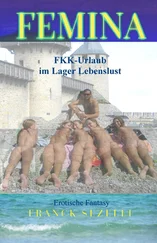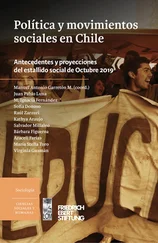Correa L, León C, Ramírez-Estrada J, Soto-Gamboa M, Sepúlveda R, Ebensperger LA (2016). Masculinized females produce heavier offspring in a group living rodent. Journal of Animal Ecology 85:1552-1562.
Correa LA, León C, Ramírez-Estrada J, Ly-Prieto A, Abades S, Hayes LD, Soto-Gamboa M, Ebensperger LA (2018). Highly masculinized and younger males attain higher reproductive success in a social rodent. Behavioral Ecology 29:628-636.
Coscarella MA, Pedraza SN, Crespo EA (2010). Behavior and seasonal variation in the relative abundance of Commerson’s dolphin ( Cephalorhynchus commersonii ) in northern Patagonia, Argentina. Journal of Ethology 28:463-470.
Coscarella MA, Gowans S, Pedraza SN, Crespo EA (2011). Influence of body size and ranging patterns on delphinid sociality: associations among Commerson’s dolphins. Journal of Mammalogy 92:544-551.
Coscarella MA, Bellazzi G, Gaffet ML, Berzano M, Degrati M (2015). Technique used by killer whales ( Orcinus orca ) when hunting for dolphins in Patagonia, Argentina. Aquatic Mammals 41:192-197.
Costa JT, Fitzgerald TD (2005). Social terminology revisited: where are we ten years later? Annales Zoologici Fennici 42:559-564.
Creel S (1997). Cooperative hunting and group size: assumptions and currencies. Animal Behaviour 54:1319-1324.
Creel S, Creel NM (1995). Communal hunting and pack size in African wild dogs, Lycaon pictus . Animal Behaviour 50:1325-1339.
Crespi BJ (1994). Three conditions for the evolution of eusociality: are they sufficient? Insectes Sociaux 41:395-400.
Crespi BJ, Yanega D (1995). The definition of eusociality. Behavioral Ecology 6:109-115.
Cocroft RB, Ryan MJ (1995). Patterns of advertisement call evolution in toads and chorus frogs. Animal Behaviour 49:283-303.
Daigre M, Arce P, Simeone A (2012). Fledgling Peruvian pelicans ( Pelecanus thagus ) attack and consume younger unrelated conspecifics. The Wilson Journal of Ornithology 124:603-607.
Danchin E, Wagner RH (1997). The evolution of coloniality: the emergence of new perspectives. Trends in Ecology & Evolution 12:342-347.
Davies NB, Krebs JR, West SA (2012). An introduction to behavioural ecology . Cuarta edición. Wiley-Blackwell, Chichester, Reino Unido.
Degrati M, Dans SL, Pedraza SN, Crespo EA, Garaffo GV (2008). Diurnal behavior of dusky dolphins, Lagenorhynchus obscurus , in Golfo Nuevo, Argentina. Journal of Mammalogy 89:1241-1247.
Degrati M, Dans SL, Garaffo GV, Crespo EA (2012). Diving for food: a switch of foraging strategy of dusky dolphins in Argentina. Journal of Ethology 30:361-367.
Desmond MJ, Savidge JA, Seibert TF (1995). Spatial patterns of burrowing owl ( Speotyto cunicularia ) nests within black-tailed prairie dog ( Cynomys ludovicianus ) towns. Canadian Journal of Zoology 73:1375-1379.
De Bruyn PJN, Cameron EZ, Tosh CA, Oosthuizen WC, Reisinger RR, Mufanadzo NT, Phalanndwa MV, Postma M, Wege M, van der Merwe DS, Bester MN (2010). Prevalence of allosuckling behaviour in Subantarctic fur seal pups. Mammalian Biology 75:555-560.
De Buen FD (1958). Investigaciones sistemáticas y biológicas sobre la merluza. Boletín de la Sociedad de Biología de Concepción 33:107-124.
de Jager M, van de Koppel J, Weerman EJ, Weissing FJ (2020). Patterning in mussel beds explained by the interplay of multi-level selection and spatial self-organization. Frontiers in Ecology and Evolution 8:7.
De Stephanis R, Verborgh P, Pérez S, Esteban R, Minvielle-Sebastia L, Guinet C (2008). Long-term social structure of long-finned pilot whales ( Globicephala melas ) in the Strait of Gibraltar. Acta Ethologica 11:81-94.
De Vos A, O’Riain MJ (2010). Sharks shape the geometry of a selfish seal herd: experimental evidence from seal decoys. Biology Letters 6:48-50.
Diaz NF, Sallaberry M, Valencia J (1987). Microhabitat and reproductive traits in populations of the frog, Batrachyla taeniata . Journal of Herpetology 21:317-323.
Di Fiore A, Rendall D (1994). Evolution of social organization: a reappraisal for primates by using phylogenetic methods. Proceedings of the National Academy of Sciences USA 91:9941-9945.
Donadio E, Buskirk SW (2006). Flight behavior in guanacos and vicuñas in areas with and without poaching in western Argentina. Biological Conservation 127:139-145.
Donahue MJ (2006). Allee effects and conspecific cueing jointly lead to conspecific attraction. Oecologia 149:33-43.
Donázar JA, Feijóo JE (2002). Social structure of Andean condor roosts: influence of sex, age, and season. The Condor 104:832-837.
Donázar JA, Travaini A, Ceballos O, Rodríguez A, Delibes M, Hiraldo F (1999). Effects of sexassociated competitive asymmetries on foraging group structure and despotic distribution in Andean condors. Behavioral Ecology and Sociobiology 45:55-65.
Downing PA, Cornwallis CK, Griffin AS (2015). Sex, long life and the evolutionary transition to cooperative breeding in birds. Proceedings of the Royal Society B: Biological Sciences 282:20151663.
Duffy JE (2007). Ecology and evolution of eusociality in sponge-dwelling shrimp. Pp. 387-409, en: Evolutionary ecology of social and sexual systems: crustaceans as model organisms (Duffy JE, Thiel M, eds.). Oxford University Press, Oxford, Reino Unido.
Duffy JE, Thiel M (2007). Evolutionary ecology of social and sexual systems: crustaceans as model organisms . Oxford University Press, Oxford, Reino Unido.
Dugatkin LA (1997). Cooperation among animals: an evolutionary perspective . Oxford University Press, Oxford, Reino Unido.
Ebensperger LA (2001). A review of the evolutionary causes of rodent group-living. Acta Theriologica 46:115-144.
Ebensperger LA, Bozinovic F (2000) Communal burrowing in the hystricognath rodent, Octodon degus : a benefit of sociality? Behavioral Ecology and Sociobiology 47:365-369.
Ebensperger L, Castilla JC (1991) Conducta y densidad poblacional de Lutra felina en Isla Pan de Azúcar (III Región), Chile. Medio Ambiente (Chile) 11:79-83.
Ebensperger LA, Cofré H (2001). On the evolution of group-living in the New World cursorial Hystricognath rodents. Behavioral Ecology 12:227-236.
Ebensperger LA, Wallem PK (2002). Grouping increases the ability of the social rodent, Octodon degus , to detect predators when using exposed microhabitats. Oikos 98:491-497.
Ebensperger LA, Blumstein DT (2006). Sociality in New World Hystricognath rodents is linked to predators and burrow digging. Behavioral Ecology 17:410-418.
Ebensperger LA, Hayes LD (2016a). An integrative view of caviomorph social behavior. Pp. 326- 355, en: Sociobiology of caviomorph rodents: an integrative approach (Ebensperger LA, Hayes LD, eds.). John Wiley & Sons Ltd., Chichester, Reino Unido.
Ebensperger LA, Hayes LD (2016b). Sociobiology of caviomorph rodents: an integrative approach . John Wiley & Sons Ltd., Chichester, Reino Unido.
Ebensperger LA, Veloso C, Wallem PK (2002). Do female degus communally nest and nurse their pups? Journal of Ethology 20:143-146.
Ebensperger LA, Hurtado MJ, Soto-Gamboa M, Lacey EA, Chang AT (2004). Communal nesting and kinship among degus ( Octodon degus ). Naturwissenschaften 91:391-395.
Ebensperger LA, Hurtado MJ (2005). On the relationship between herbaceous cover and vigilance activity of degus ( Octodon degus ). Ethology 111:593-608.
Читать дальше












